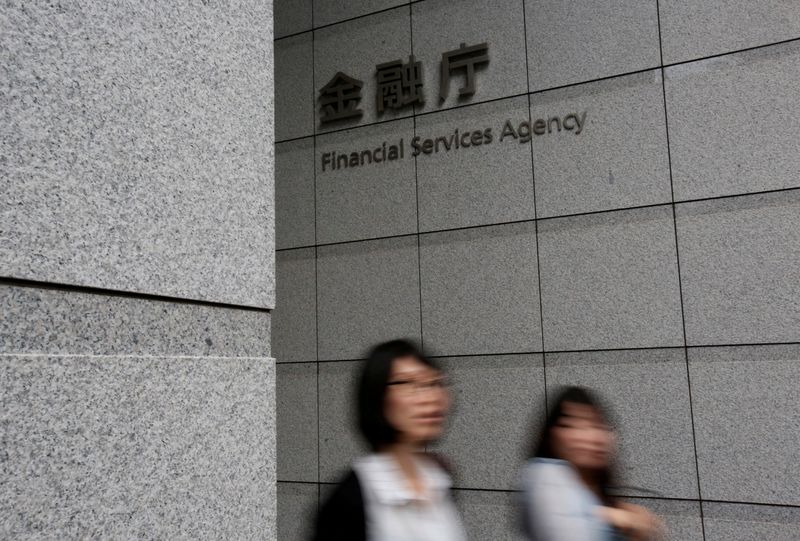Investing.com’s stocks of the week
By Makiko Yamazaki and Ritsuko Shimizu
TOKYO (Reuters) - Japanese regional lenders will be well able to weather even "large" losses on their foreign bond portfolios thanks to strong capital buffers, a senior banking regulator official said, rebuffing concerns fuelled by U.S. banking woes.
Those strong capital buffers, in tandem with a deposit base that comes largely from households, mark Japan's tens of regional lenders as different from the failed Silicon Valley Bank (SVB), said Toshinori Yashiki, deputy director-general at Japan's Financial Services Agency.
"Overseas media seem to be focusing on Japanese regional banks in association with the SVB collapse, but I'd like to emphasise that they are completely different," he told Reuters in an interview.
The SVB collapse earlier this month has put Japanese regional banks' foreign bond portfolios under investor scrutiny, after years of ultra-low interest rates at home had driven the lenders to pile up positions in high-yielding but relatively safe assets elsewhere.
Analysts at SMBC Nikko Securities calculated unrealized foreign bond losses at over 70 listed Japanese regional banks totalling 1.4 trillion yen ($10.6 billion) at the end of last year, the worst in decades for global bond markets.
"It is true that unrealized losses on foreign bond holdings at some regional banks are large, but the banks have enough capital buffers even when such losses are taken into account," Yashiki said.
He also said he saw no immediate need to review Japan's regulatory framework as Japanese banks have grown resilient with significantly improved asset quality.
But the FSA "would need to step up monitoring" in the event of monetary policy changes at home, he noted, amid growing expectations the Bank of Japan could eventually change course on its ultra-loose monetary policy.
SMBC Nikko's calculation suggests if the 10-year Japanese government bond yield were to rise to 1%, unrealized losses on yen bonds would increase to around 4 trillion yen.
($1 = 132.7100 yen)
